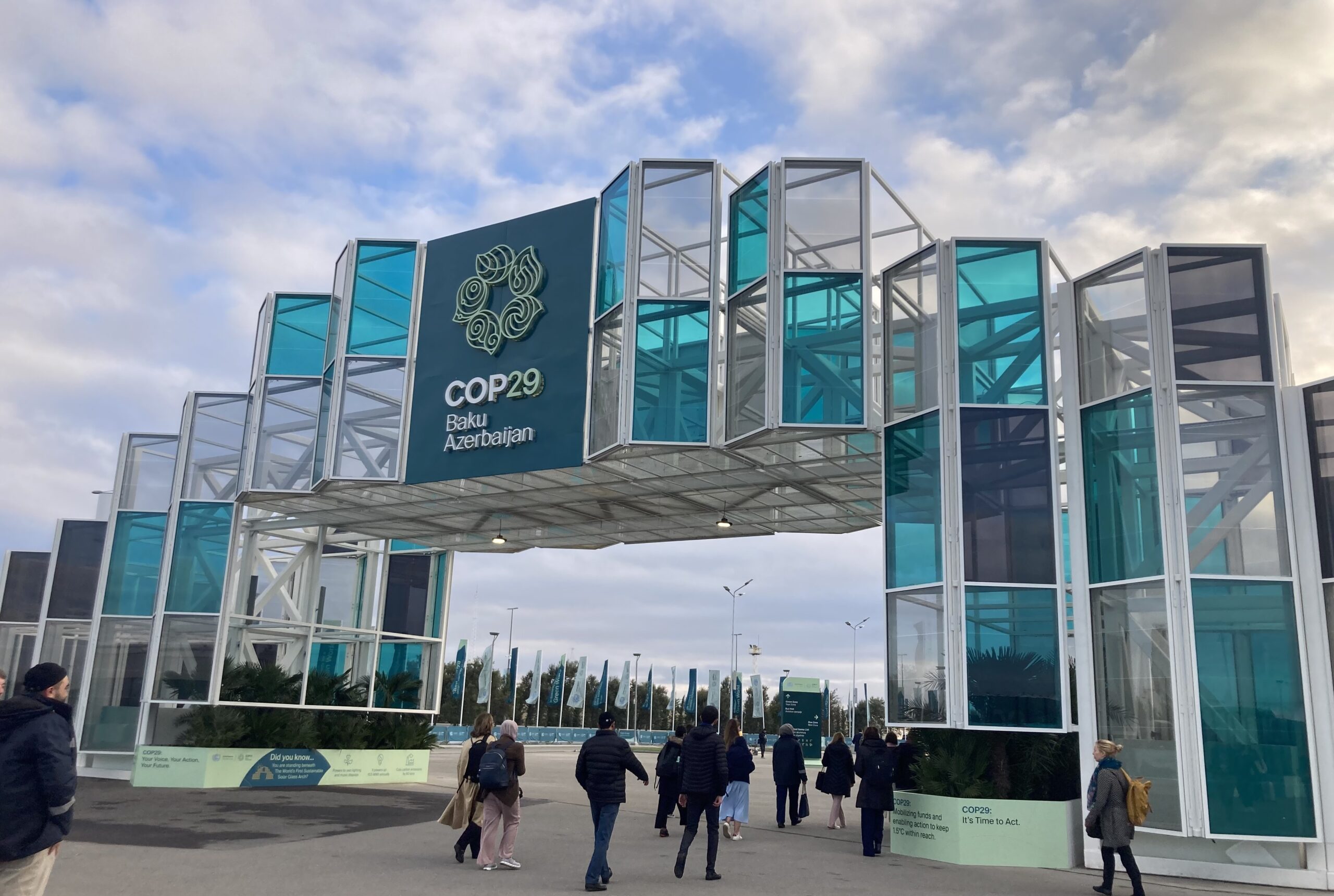29 November 2024
ICLEI Africa’s COP29 wrap
Less ambition than hoped for, but renewed commitment to push forward with scaled sub-national action



The outcomes of COP29 lacked the ambition needed to fight the climate emergency, especially in relation to the scale of finance needed by countries that have done the least to cause climate change, but bear the brunt of the impacts. Many of these countries are located on the African continent. While we welcome the first major climate finance deal in fifteen years, the amount of finance does not match the need, and it still remains to be seen how this funding will be mobilised, who will contribute, and for ICLEI Africa, one of the most critical questions: who will have access to it. To the latter, ICLEI as LGMA focal point has spent many years advocating for improved modalities (which includes appropriate direct access) for finance to reach the scale where impacts are experienced – the local level, the city level, the community level. The slow progress on operationalising the Loss and Damage Fund and insufficient commitments to financing adaptation left many African stakeholders disillusioned. Yet, amidst these challenges, hope remains in Africa’s growing climate change leadership, innovative financing solutions, and the resilience of local communities.
As we reflect on the key outcomes of COP29, it’s clear that the role of cities, especially those in Africa, will continue to be indispensable in the global climate change fight.
Here are five key takeaways from COP29:

1. Finance
The push for a new climate finance target was one of the most contentious issues at COP29, with developing countries demanding that developed nations raise $1.3 trillion per year in climate finance, by 2035. In the end, this goal was not met. Negotiators settled on a New Collective Quantified Goal (NCQG) aiming to raise USD 300 billion annually by 2035, with a longer-term ambition to reach USD 1.3 trillion per year by the same year.
In addition to ICLEI’s global advocacy role related to mobilisation of finance for city scale action, ICLEI Africa is walking the talk, through tangible climate finance-related projects. We are learning by doing, and ironing out the most useful role we can play in the finance mobilisation process.

2. Adaptation
Adaptation was a central focus at COP29, with growing recognition of the need for cities to integrate climate resilience into their development plans. However, the push for a dedicated global adaptation goal—a specific target to support vulnerable nations, failed to gain significant momentum.
Since its establishment in 1995, ICLEI Africa has placed climate adaptation at the core of its work, reflecting the urgent needs of African cities, which face the impacts of climate change daily and directly. A prime example is the INACCT Resilience project, which is supporting municipalities like eThekwini (Durban) in developing and implementing early warning systems for extreme weather events. These systems have already contributed to saving approximately 300 lives by reducing response times during recent flooding, showcasing the transformative impact of proactive resilience planning. Through INACCT Resilience and complementary initiatives like AfriFOODlinks and Urban Natural Assets (UNA), ICLEI Africa continues to build resilience in subnational governments across the continent, equipping cities with the tools to mitigate climate risks and prepare for future shocks.
3. Capacity building
As highlighted by the most recent Adaptation Gap Report, capacity building in low-income countries remains a critical barrier to effective climate action. Without local capacity, locally led solutions cannot be developed and fought for. Without local capacity, the governance certainty necessary for financial investment will not be met. Without local capacity, externally funded programmes and projects run the risk of not being sustainable into the future.
Capacity building has always been central to ICLEI Africa’s work, driven by co-productive processes that prioritise listening, collaboration, and demand-led solutions tailored to local needs. In Cameroon, the BRIDGE project is strengthening local capacity to unlock finance for gender-responsive, locally led adaptation. By co-developing Gender Equality and Social Inclusion (GESI) criteria with local stakeholders, refining financial mechanisms, and delivering tailored training programs for knowledge brokers, BRIDGE equips communities and local governments with the skills and tools needed to navigate the adaptation finance ecosystem. This approach empowers vulnerable populations in informal settlements, ensuring that adaptation solutions are inclusive, effective, and scalable across Central Africa.
4. Just Transitions
Cities are at the forefront of fair and inclusive change. The conversation about just transitions is gaining traction, with cities and regions playing an increasingly influential role in shaping and implementing these transitions at the local level. However, the Just Transition Work Programme must provide adequate support to cities and regions, to ensure that these transitions are equitable and inclusive. The conversation about cities and regions in the design and implementation of the next round of Nationally Determined Contributions is becoming increasingly robust and sophisticated. The coming months are crucial for making this progress concrete.
ICLEI Africa is working with local governments in South Africa to support their just transition. For example, Steve Tshwete Local Municipality are playing a pioneering role in leading a local just transition part of which was to develop a just transition chapter in their Integrated Development Plan, a first of its kind. ICLEI AFrica was proud to support the municipality in the development of this groundbreaking chapter. ICLEI Africa also supported South Africa’s Presidential Climate Commission (PCC) in the development of a new report which examines stakeholder perspectives on the engaging with the just transition, a provide recommendations for laying a foundation and creating a platform for South Africa to work towards developing a just and people-centred transition.

5. Operationalisation of Loss and Damage Fund
The Loss and Damage Fund made some progress at COP29, with pledges bringing the total fund to $759 million. However, UN Secretary-General António Guterres rightly pointed this initial capitalisation” is nowhere near sufficient to right the wrongs inflicted on vulnerable communities.
Through the DRR4Africa project (2023–2025), ICLEI Africa is advancing practical approaches to integrate loss and damage considerations into urban planning. In Lusaka, Cape Coast, and Port Louis, participatory workshops using the UNDRR Making Cities Resilient 2030 Disaster Resilience Scorecard have enabled cities to assess their disaster risks and co-develop tailored solutions. By leveraging data from the World Risk Poll alongside local insights, the project has equipped cities to advocate for investments in critical but underfunded areas like waste management and emergency services. This work highlights the intersection of disaster risk reduction and loss and damage, demonstrating that proactive, evidence-based urban planning can address underlying vulnerabilities while enhancing resilience to climate impacts.


